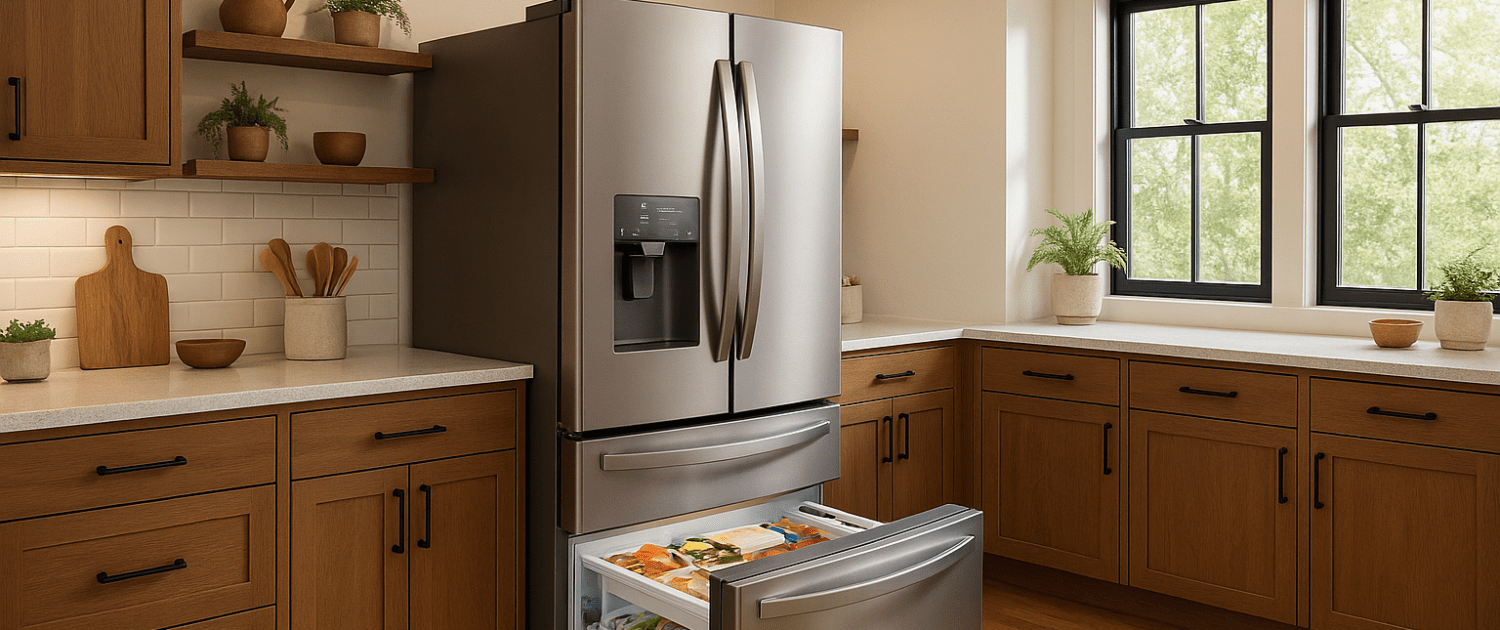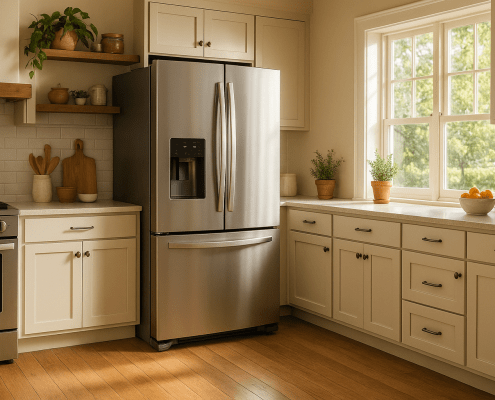Replacing LG/Kenmore Fridge Freezer Slide Rail 5218JA1010F
Steven E / Wednesday June 4, 2025
Is your refrigerator drawer a hassle to open, stuck, or even worse, off-track? Say goodbye to the frustration of jammed drawers with a quick DIY fix for your LG or Kenmore fridge. Dive into our guide below for step-by-step instructions and a how-to video that makes replacing the drawer slide rail a breeze.
Looking for the right part? Enter your appliance model number below to find the exact match and get your appliance running like new again!
If your LG or Kenmore refrigerator drawer isn’t sliding like it used to—or worse, it’s stuck or off-track—it might be time to replace the drawer slide rail (part #5218JA1010F). This part keeps your drawers moving smoothly so you can grab your snacks and leftovers without a fight. Replacing it might sound intimidating, but it’s actually a simple DIY fix you can knock out in no time. In this guide, we’ll walk you through everything you need to know to swap out that slide rail and get your fridge drawer gliding like new again.
Watch the repair here: How to install freezer drawer slide
The information in this article may not apply to your specific appliance model. We recommend consulting your manufacturer’s documentation or contact us with any questions.
Tools and materials needed
- Left 5218JA1010F or right 5218JA1010E freezer drawer slide rail (depending on which side is broken). Take your model number to AppliancePartsPros.com to locate the correct part for your unit.
- Phillips head screwdriver
- Flat blade screwdriver
Safety precautions
When working on any appliance, remember to keep safety first. Here are some tips to keep in mind:
- Always power off and unplug your appliance or switch off the circuit breaker before attempting any maintenance or replacement work. This keeps you safe by preventing any risk of injury from electric shock.
- Wear insulated work gloves to protect your hands from sharp metal parts, pinching hazards and debris.
- Take your time and don’t rush while working to prevent accidents and personal injuries.
- Work in a well-lit area so you can clearly see and access the interior parts.
- Clear your workspace of clutter and other obstacles. Keep children and pets away from the work area.
- Never work on internal parts with bare wet hands. Make sure the work area is completely dry.
- Check your user manual to see if there are specific installation or safety instructions for your part or appliance.
- Be gentle when handling or removing parts. Excessive force might damage the appliance or cause injury.
- Wear safety glasses when working with chemicals, dust or cleaning large debris to prevent injury.
- If the appliance has recently been used, give it plenty of time for any heating parts to cool down before working on it.
- Take pictures or make a note of wiring terminals or other connections before disconnecting to prevent any problems with reassembly.
- When working with wires, avoid touching any exposed wires or terminals. If you need to touch a wire, use a non-conductive tool or wear insulating gloves to prevent electrical shock.
- Turn off the water supply at the outlet before beginning repairs to any appliance parts that hold water. Have towels ready for any residual water in the system when removing parts.
Removal and Disassembly Steps
- Start by opening the freezer drawer so we can get to everything inside.
- Make sure the ice bucket is empty. Then, lift the front of it and slide it out.
- Lift the front of the freezer drawer and pull it out. Set it aside.
- Grab the basket by the back, lift it slightly, and pull it out.
- Use a Phillips screwdriver to remove one screw from each side of the door.
- Important: Don’t pull the door by the handle—it could snap off! Instead, support it from the sides, lift it up, and remove it.
- Using your flat blade screwdriver, Pry off the gear from one side by pushing it to the right.
- Remove the connecting rod from the opposite side.
- Use your Phillips screwdriver to take out three screws holding the left rail assembly to the freezer wall.
- Peel the assembly off the wall carefully.
- Unplug the door switch harness by pressing the locking tab.
- Pull the rail assembly out toward the center to free it.
- Flip the assembly over.
- Use your flat blade screwdriver to gently lift the locking pin that holds the rail in place.
- Carefully pull the old rail out.
Installation and Reassembly Steps
- Slide the new rail into the same spot in the bracket until it clicks and locks in place.
- Make sure the gear is seated properly at the back of the bracket.
- Line up the two posts at the back with the cutouts on the freezer wall.
- Slide the whole assembly back in and plug the door switch harness back in—it should click.
- Secure the assembly with the three Phillips screws.
- Make sure both drawer rails (left and right) are pulled all the way out.
- Slide the rod into the right gear, then press the left gear back on.
- Hook the back clips into place.
- Lower the front of the door.
- Secure both sides with the Phillips screws.
- Slide the freezer basket in—front first, then the back.
- Place the freezer drawer back on the rails and slide it in. It should glide smoothly.
- Pop the ice bucket back in by matching the curved edges with the grooves.
- Plug your fridge back in or turn on the circuit breaker. Make sure it’s cooling as expected.
More information
Thanks for reading! If you still need replacement parts, snag your model number then visit AppliancePartsPros.com. With over two million parts in stock, most orders ship out within two biz days. Their team (reachable at 1-877-477-7278) can also help locate parts or track orders.
While awaiting your delivery, explore appliance repair tutorials on the AppliancePartsPros YouTube channel. You can also browse articles on their DIY appliance repair blog.
For even more handy fixer-upper guidance, follow AppliancePartsPros on Facebook, Twitter, and Instagram!
With nearly a decade of experience in providing top-notch customer service regarding appliance parts and repair, Steven enjoys sharing practical advice, troubleshooting tips, and interesting information to help readers stay informed.





